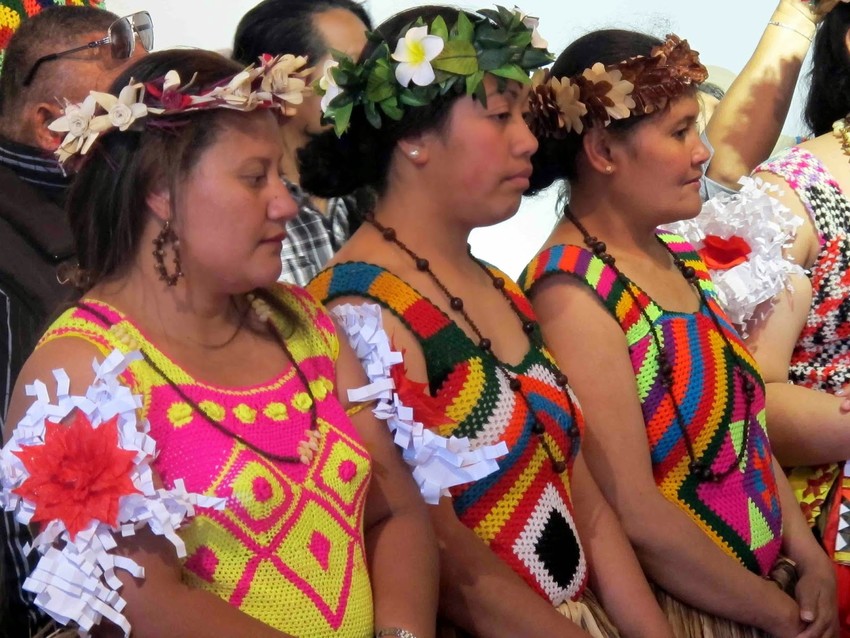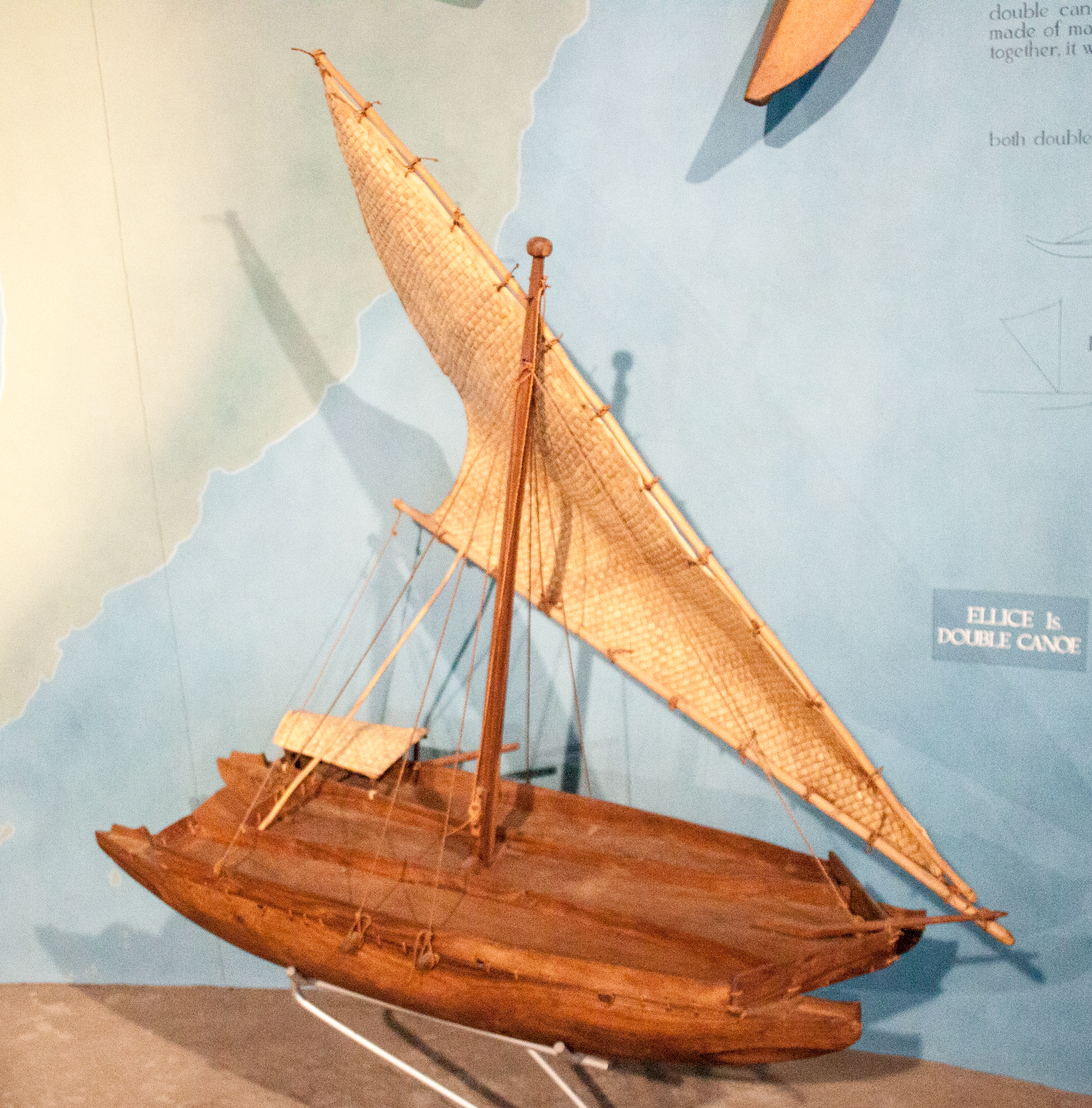Tuvalu makes use of its exotic landscape and natural materials in its art. And in many ways, their art lives all around them, in their day-to-day functions. Women often use cowrie shells to either wear as jewelry or to work into mats, wall hangings, or fans. (Cowries are actually a type of small- to medium-size sea snails.) Women also make use of other natural materials like different kinds of leaves, fronds, flowers, and coconut fibers to create headbands, headdresses, and traditional skirts and tops. There is also a special type of crocheting is called kolose that is often thought of as a national art. While the women were making clothing and jewelry items, the men were making canoes for transport and fishing along with fish hooks. They also put together other tools of the trades for fishing and building. Traditional buildings also utilized native plants and trees. Prior to European arrival, buildings were tied together with braided ropes, but afterwards, they introduced iron nails and corrugated materials for roofing. Today they import different kinds of timber, concrete, and other materials. A lot of these traditional buildings were painted with a white paint made of dead coral and firewood that was mixed with water. Today, many Tuvaluan artists still tie their works back to the islands, using the land itself as a backdrop to tell a larger story. Some artists have even used their art to make a statement on current issues, like climate change. This goes for foreign artists who are attracted to Tuvalu and Tuvaluan artists living abroad. For example, there are many artists from these islands living in New Zealand who showcase their works. And a Taiwanese artist named Vincent Huang has used Tuvalu as a backdrop toward his fight for climate change awareness. There’s not a lot of information on Tuvaluan literature, and I’m venturing to guess there just hasn’t been much of a focus on it. Either that, or the books that are written by Tuvaluan writers just aren’t readily available on a large scale. Prior to European influence, there were a great deal of folklore stories passed down by word of mouth from one generation to the next. There’s a certain element of the supernatural blending with the natural that makes its way into many of these stories from the South Pacific (think of some of the themes in the movie Moana). One of the most celebrated Tuvaluan authors is Selina Tusitala Marsh. Her mother is of Samoan and Tuvaluan ancestry, although she grew up in New Zealand. Poet and educator, she teaches at the University of Auckland there. And from what I gathered, there are probably other writers out there, but most are living as an expat somewhere else.
Up next: music and dance




.jpg)
No comments:
Post a Comment